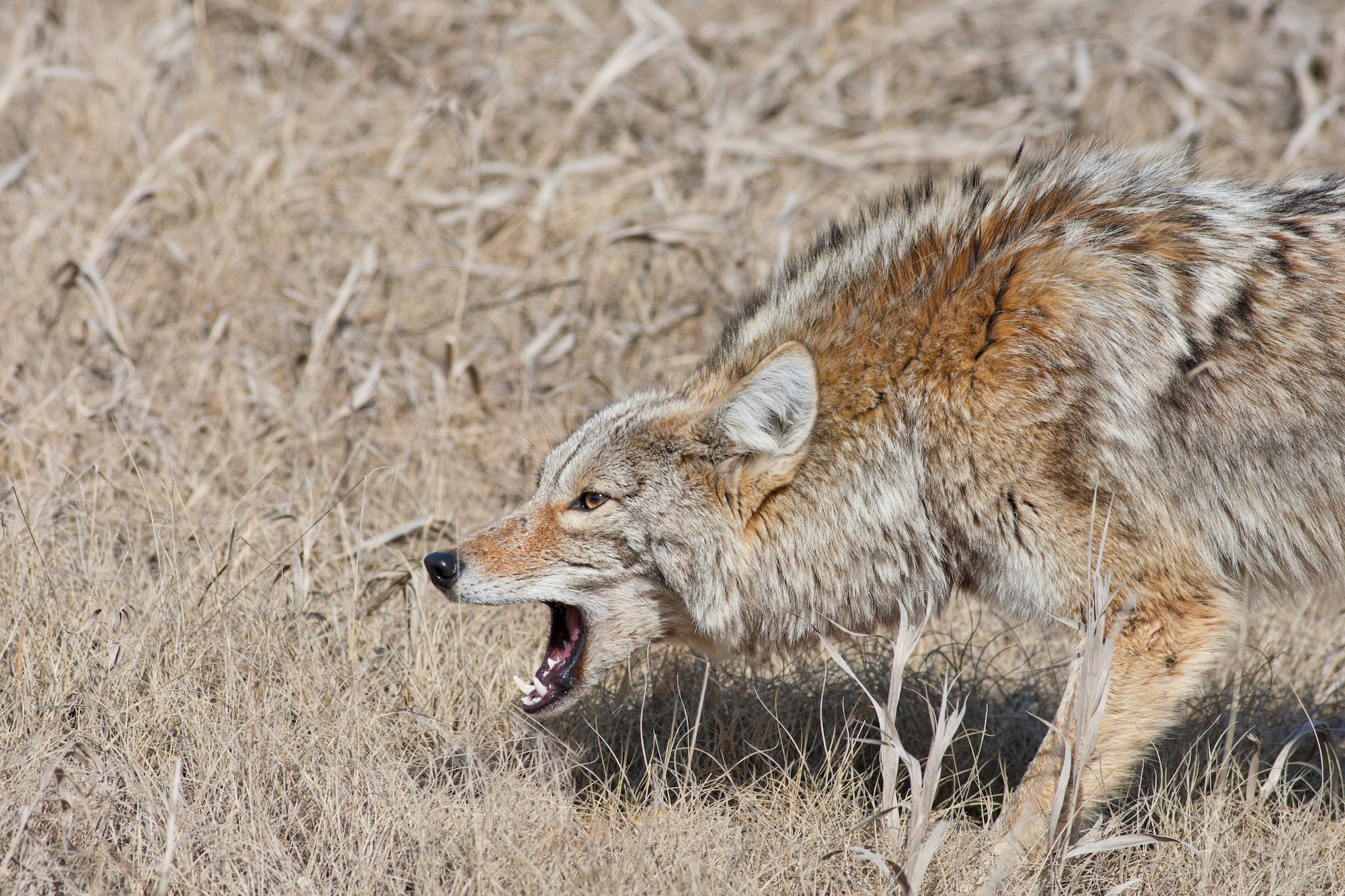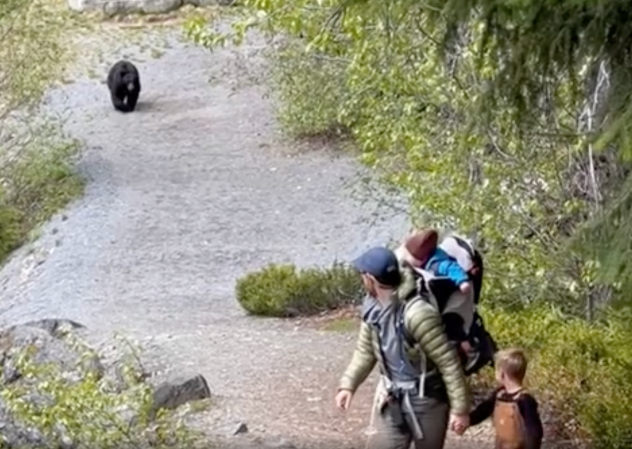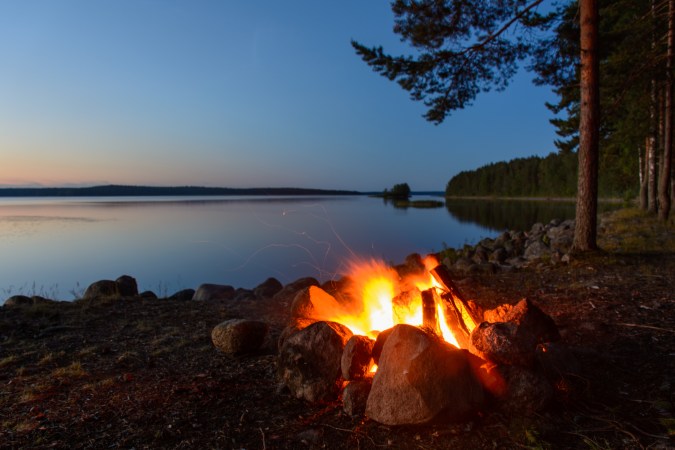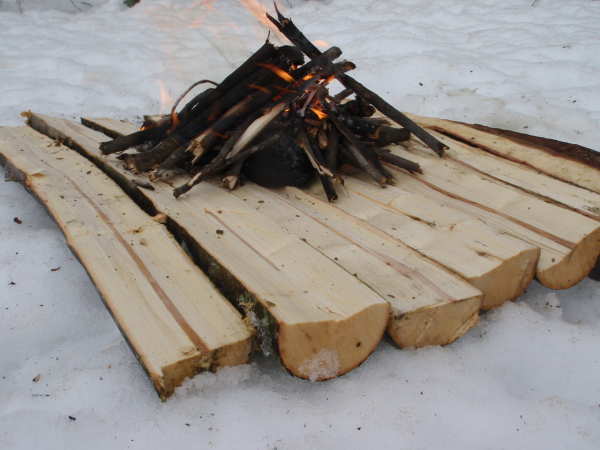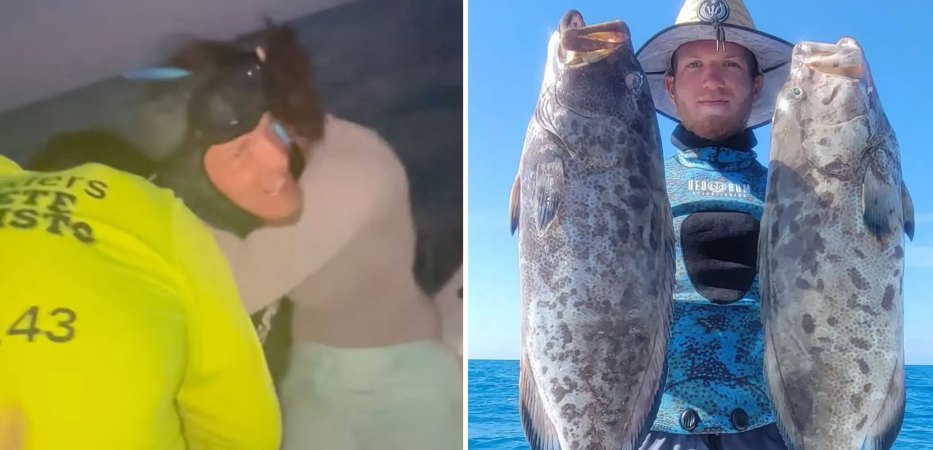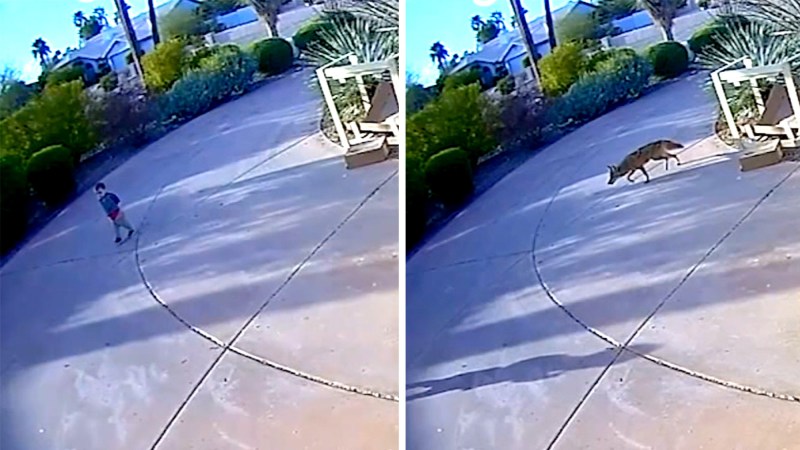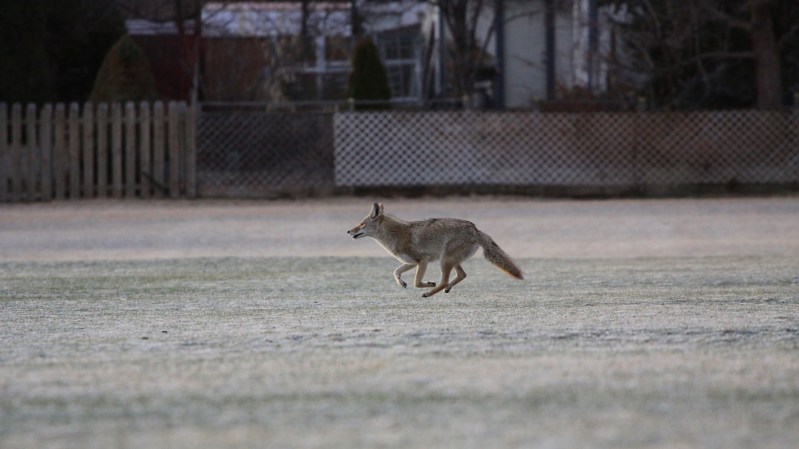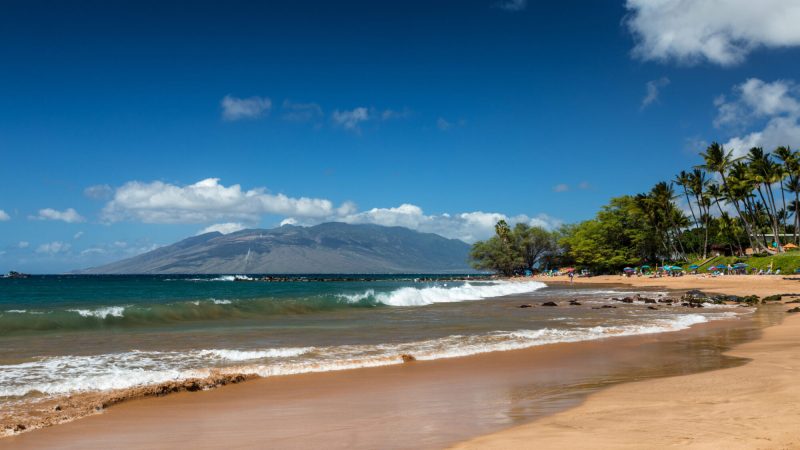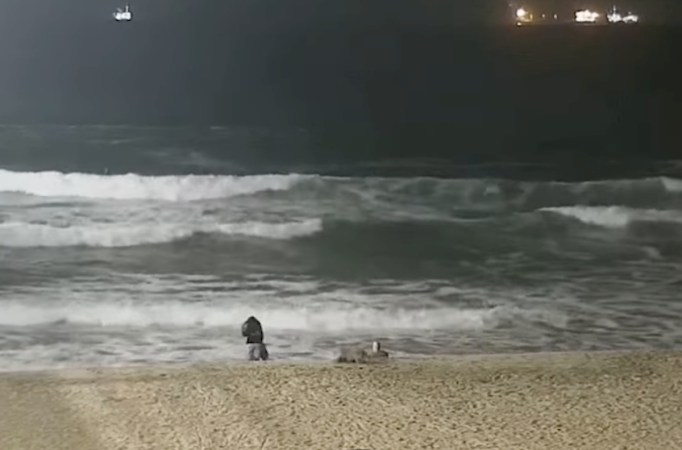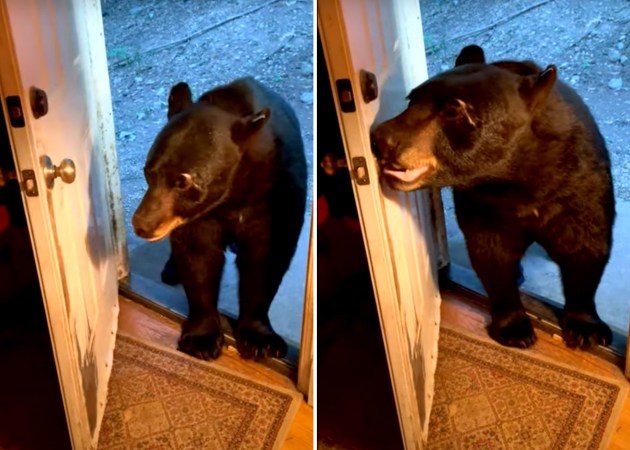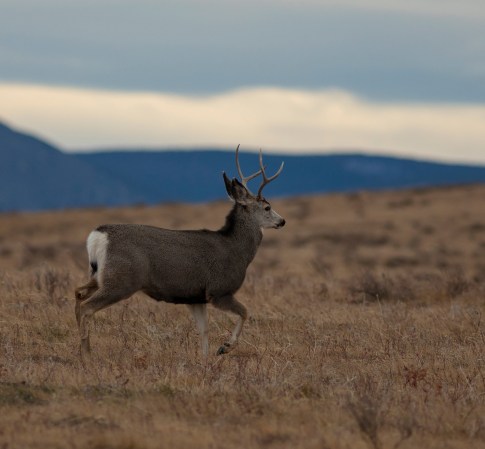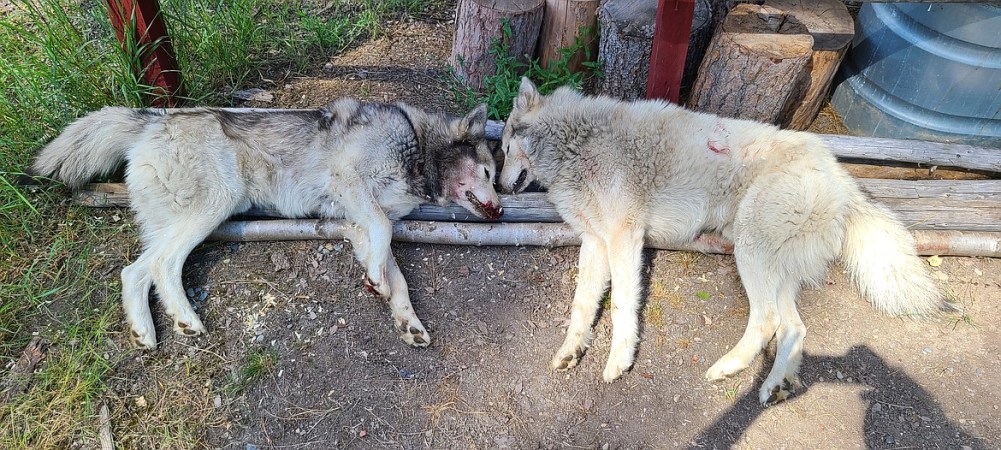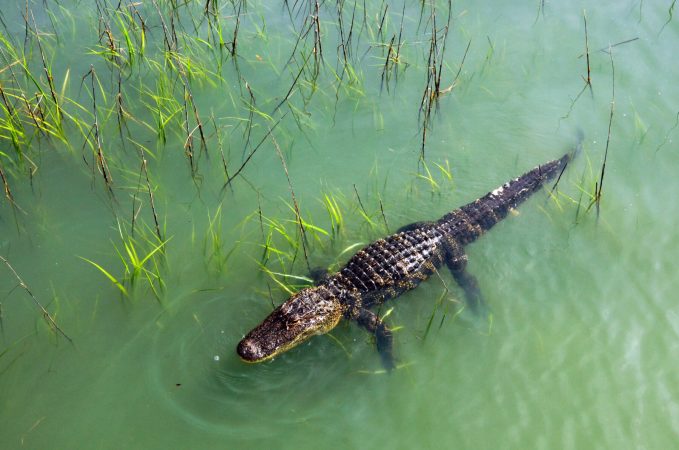Sofia Montalbano didn’t expect her first time skiing Idaho’s Schweitzer Mountain to end in puncture wounds all over her left arm and leg. But after a run-in with a coyote in early January, the college student now knows what it’s like to fight off a coyote attack.
Montalbano had been skiing down a slope when she noticed a coyote chasing her, she told local reporters. The coyote bit Montalbano’s left leg, causing her to turn into the trees. She tried to hit the animal with her ski pole, but accidentally skied into a tree well (a hole in the snow that forms around a tree trunk). The coyote continued to attack Montalbano, biting her wrist as Montalbano—now stuck—called for help. Another skier heard her shouts and drove the coyote away by whacking it with her pole, giving Montalbano a chance to unclip from her skis and crawl out of the tree well. But the attacking coyote kept doubling back, and both skiers had to use their poles to keep the animal at bay until it finally gave up and left.
Montalbano later received over 40 injections, including tetanus and rabies shots. Photographs of her injuries show bite marks on her left leg, arm, wrist, and hand.
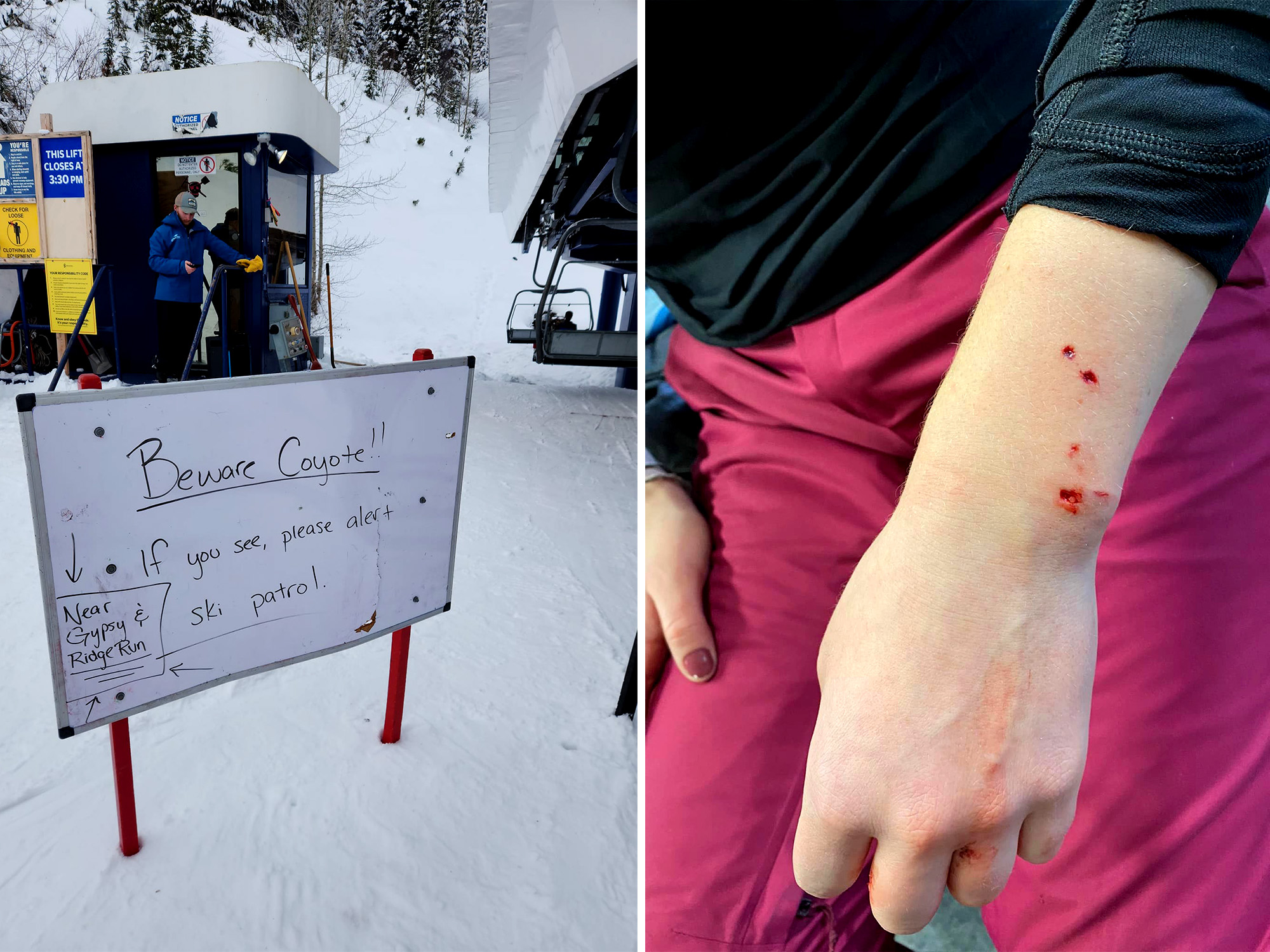
Now dubbed “the coyote girl” by her family, Montalbano is more aware than ever that playing in nature means sharing space with wild animals. And while coyotes aren’t the most dangerous predators in North Idaho (which is home to a healthy grizzly population), the incident serves as a reminder that coyotes do occasionally attack humans.
“When you’re out on a mountain like that, you’re in coyote habitat,” Montalbano said. “I mean, stuff like this can happen anywhere when you’re out in the wild.”
When Do Coyotes Attack Humans?
The Idaho Department of Fish and Game explained in a press release that it had received additional reports of coyotes chasing skiers at Schweitzer prior to Montalbano’s attack. And later that month, in broad daylight, two more coyotes were spotted wandering downtown in the nearby city of Sandpoint. Both appeared comfortable around humans, according to the agency, which called this behavior “highly unusual.”
T.J. Ross, regional communications manager for IDFG, tells Outdoor Life that wildlife officers were eventually able to track down and euthanize the coyote that attacked Montalbano. He says the animal appeared healthy, and that it was never tested for rabies because it didn’t show any symptoms.
“Typically a rabid animal is showing symptoms when it gets to the point of behaving that way. They’re usually emaciated, with a variety of other symptoms that are very clear to see,” Ross says. “The other reason we didn’t test [for rabies] is because there have only been three documented cases of rabies in land mammals in Idaho in the last 20 years. It’s extremely uncommon.”
He adds that the most likely explanation for the attack is habituation to humans. Montalbano was in a popular ski area, where there are plenty of food opportunities and people around. And because the incident occurred months before coyotes have their pups (which is typically in April and May), it’s unlikely that the coyote was protecting its den at the time.
While Montalbano’s story is alarming, it’s far from common. Coyote attacks on humans are extremely rare. This is impressive, considering coyotes’ near ubiquitous presence in 49 states and counting. Coyote attacks grab our attention, but studies show that firsthand encounters with this common predator are almost always more benign than aggressive. Like most wild animals, coyotes avoid human contact and prefer to keep to themselves.
Read Next: Will Wolves Attack a Man? A Story from the Archives
When attacks do occur, it’s often because coyotes have associated humans with sources of food. Location can play a role too: Urban coyotes are more accustomed to humans, while those in rural areas tend to be more fearful of us. This is partly because coyote trapping and hunting is more common in these areas.
“A lot of times, rural coyotes are more hesitant to approach humans because there’s a higher risk of hunting or harvest,” Dr. Julie Young tells Outdoor Life. As an associate professor of wildland resources at Utah State University, Young specializes in coyote behavior. She says previous studies show coyotes in rural areas are more likely to avoid humans and less likely to enter “novel” environments, such as a ski resort.
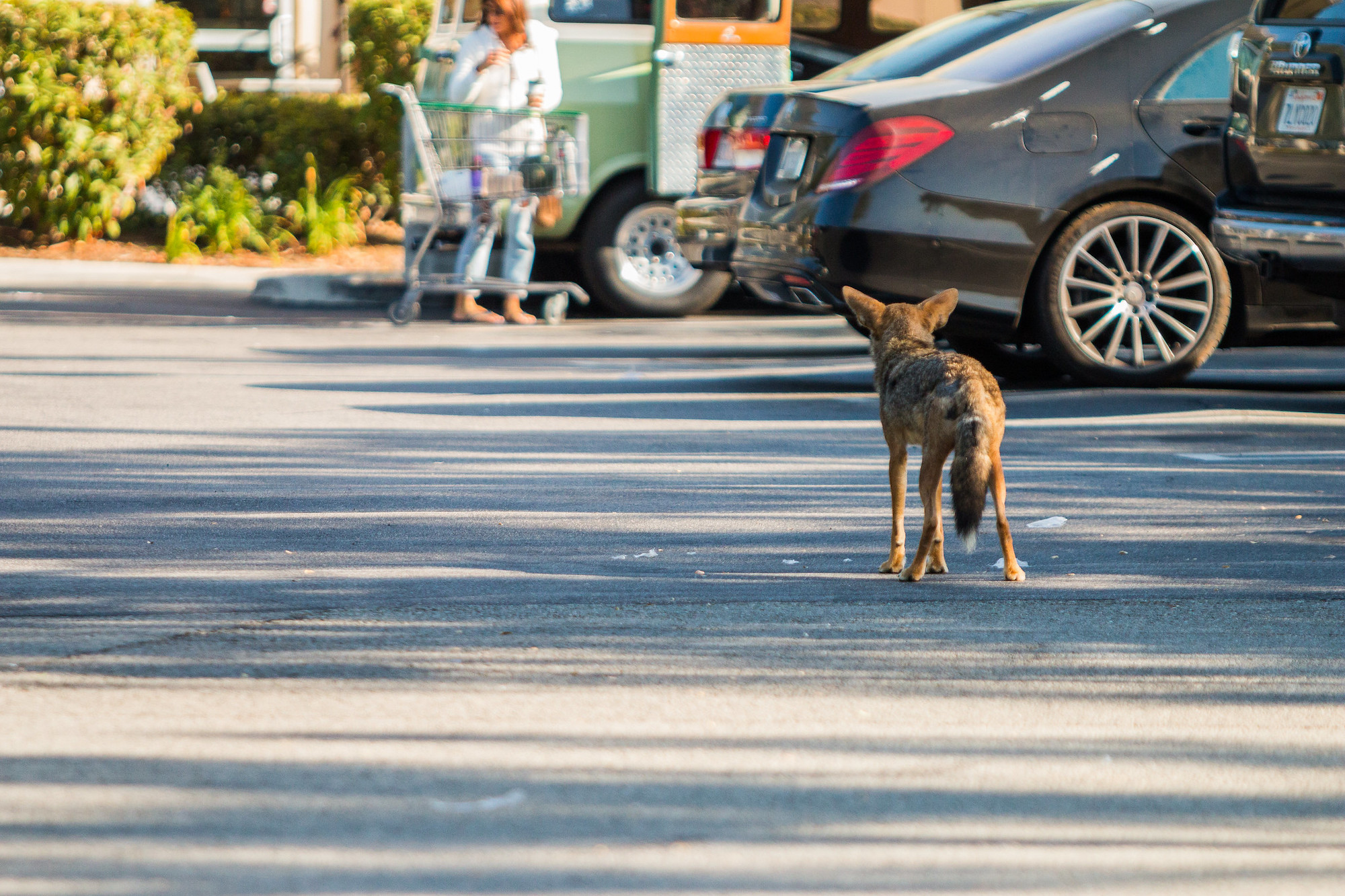
At the same time, coyotes are highly adaptable animals and will adjust their behavior depending on their surroundings. Under certain conditions, this can result in coyote attacks, which Young says typically involve small children and pets rather than adults.
In 2022, several coyote attacks on children made headlines. A coyote seriously injured a young girl one evening in April after she wandered “mere feet away” from two adults sitting near the waves at Huntington Beach in southern California. Less than a week later, a two-year-old boy in Dallas was attacked by a coyote while on his front porch, sustaining critical injuries that required surgery. And in December, a coyote briefly dragged a toddler down the sidewalk outside her home in a Los Angeles neighborhood before the child’s father chased it away. In the latter two incidents, the coyotes were known to be habituated to humans in the area. They were likely finding food that was being provided either intentionally or by accident.
These three attacks also highlight that coyote-human conflicts can occur at any time. In general, coyotes are crepuscular animals (meaning they’re most active at dawn and dusk), but their behavior can also be hard to predict.
“Coyotes will make a liar out of you every time,” Young says. “They’re just so flexible and adaptive to figuring out how to optimize to the conditions they’re in.”
Why Do Coyotes Attack Humans?
In 2012, Young was part of a research team that completed an assessment of coyote-human conflict in the city of Broomfield, Colorado, in response to coyote attacks on three children. The assessment broke down these attacks into five typical categories:
- Predatory (aggressive pursuit of a victim)
- Investigative (mistaking a human for potential prey)
- Rabid (occurs in fewer than 8 percent of attacks)
- Pet-related (attacking a human who is near or walking a pet)
- Defensive (protecting itself, pups, or den)
Researchers determined coyote attack victims are usually “engaged in some type of recreational activity, such as jogging, hiking, bicycling, or playing golf” prior to an attack. A coyote may also mistake someone resting or sleeping outdoors as potential prey. Children are the “primary target of predatory attacks,” and the majority of these occur when a child is playing outside, possibly because running and other play behaviors can trigger a coyote’s natural instinct to pursue. Their smaller size could also make them appear like more manageable prey than an adult.
Researchers also noted that in nearly a third of reported attacks, coyotes were being fed nearby. Food conditioning increases coyotes’ habituation to humans, “teaching them to associate backyards with easily acquired meals.” Food sources can be intentional or accidental, and may include bird seed, pet food, food scraps in trash or compost, or even fallen fruit.
Coyote Behavior During Mating and Denning Seasons
Seasonal changes can also impact coyote behavior. Coyote mating season generally runs from February through March, followed by pup-rearing in April and May. During this period, coyotes may act in bolder or more aggressive ways as they work to find a safe place to raise their litter and ensure steady access to food. Young says juvenile coyotes will then “disperse” from their family unit in the fall and winter, which could be one explanation for the strange attack at Schweitzer.
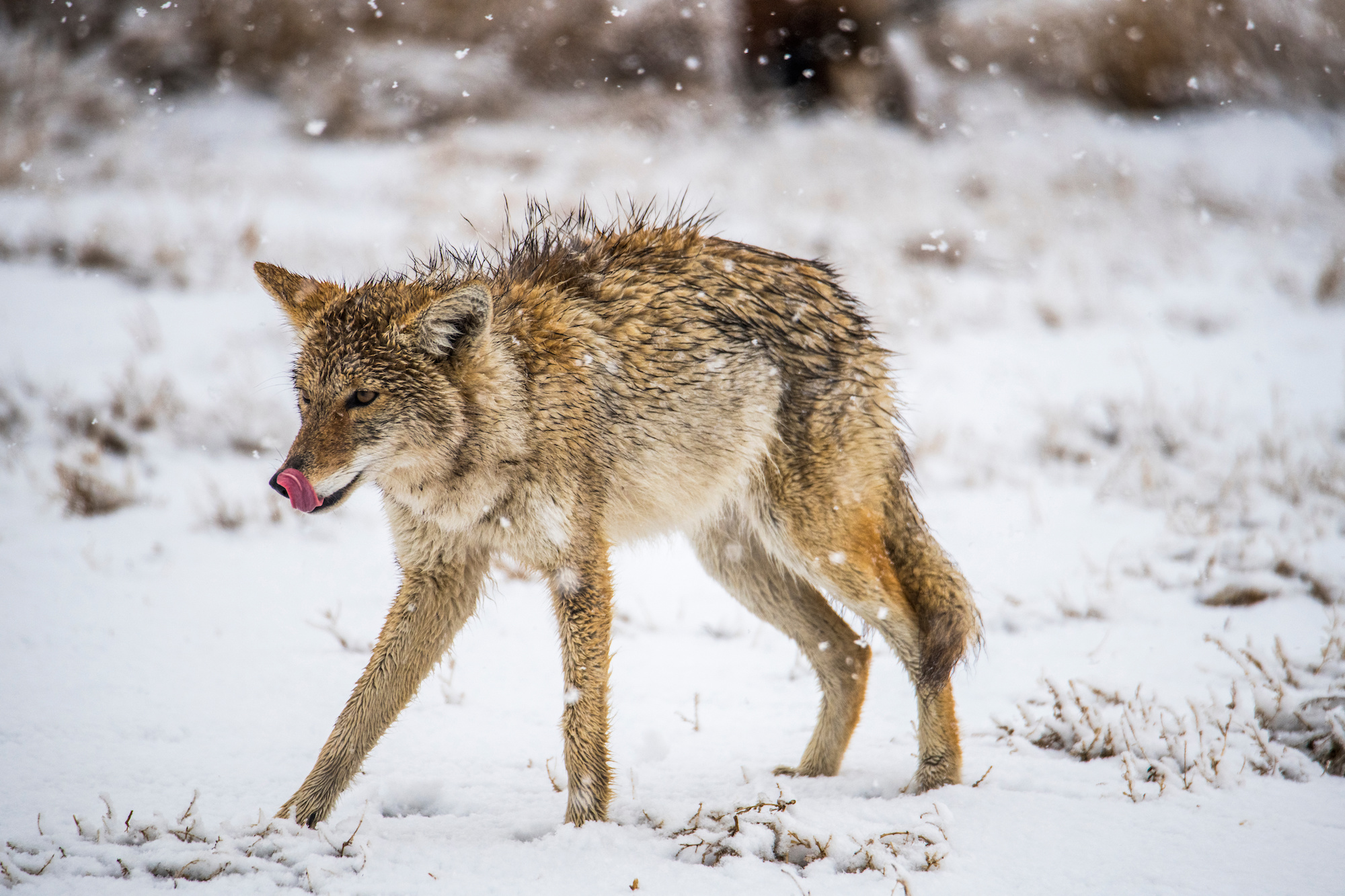
“Were these [coyotes] just young, dumb and desperate?” Young asks. She thinks the time of year, coupled with the act of chasing, could point to inexperienced coyotes that were either playing or caught off guard by skiers like Montalbano.
How to Prevent a Coyote Attack
Experts say one of the best ways to avoid conflicts between coyotes and humans is to change our own behavior.
First, be aware. Young says she never travels in the backcountry without bear spray, which offers a non-lethal, effective form of protection. She also recommends traveling in groups as the risk of being attacked by a predator goes up when humans are alone.
Second, critter-proof your home and yard. Avoid attracting coyotes—and causing potential conflicts—by removing food sources like trash or pet food, and keep a watchful eye on young children and pets. Make sure smaller livestock like chickens are housed in secure structures. You can also trim bushes where smaller prey can hide.
Private landowners and land managers will often trap or hunt coyotes—both to manage their populations and to instill a fear of humans. Some studies point out that while this will never eradicate the population, it can help tamp down on “problem animals.” Others, however, point to coyote hazing and other nonlethal methods as being more effective ways to prevent livestock depredation and other conflicts.
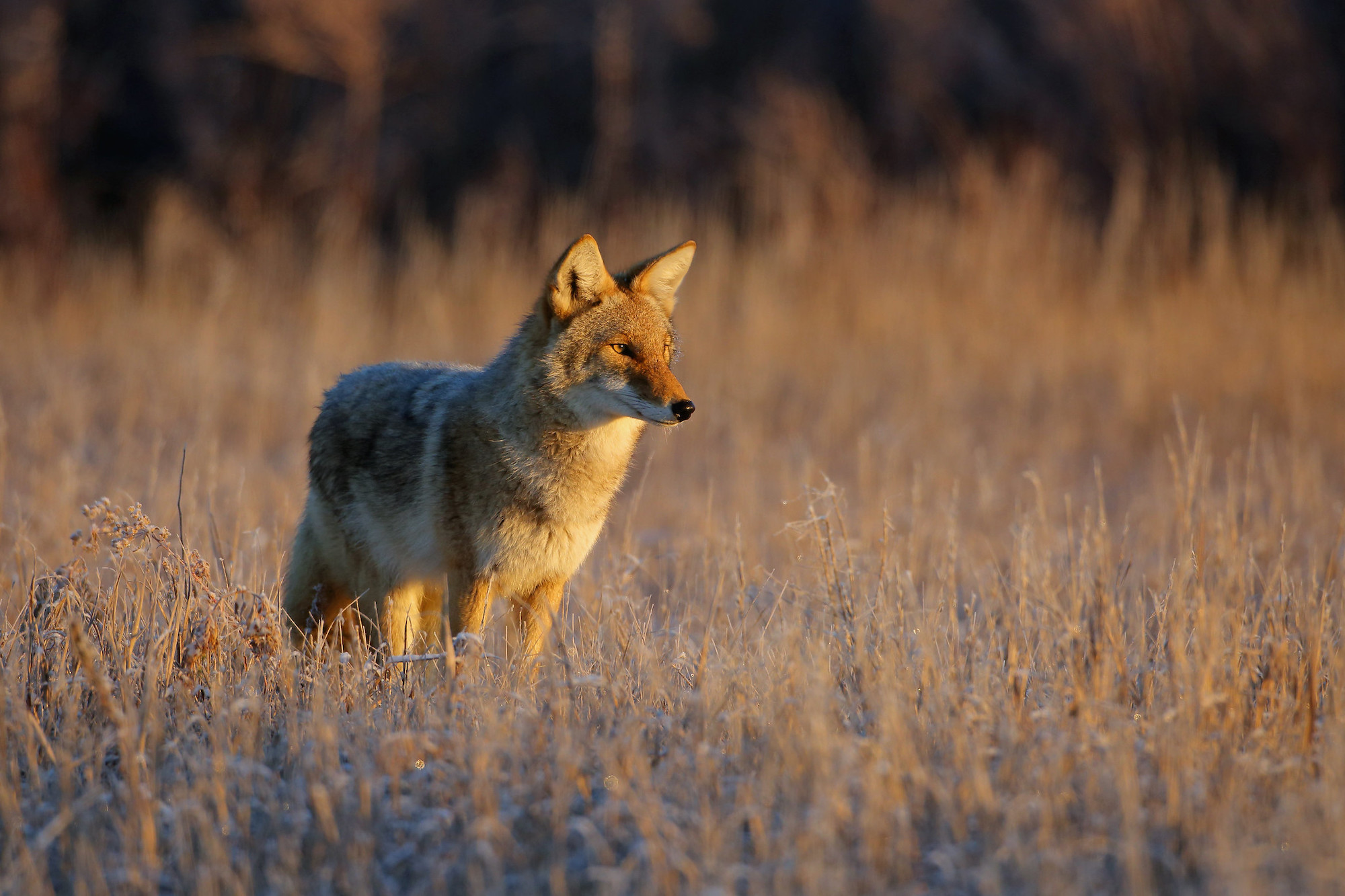
Things like fencing, fladry, guard dogs, or even a FoxLight (a device that emits randomized light beams that trick predators into thinking humans are near livestock at night) can be effective tools at minimizing depredation without removing coyotes (and their ecological value) from the landscape.
Read Next: How Coyote Hunting Dogs Decoy in Predators
“Low-intensity” hazing can be used around the house too, and includes tactics like spraying water, shining bright lights, and using noisemakers. These tactics can also reinforce a healthy amount of fear and discomfort around humans.
As the start of coyote pup-rearing season approaches, IDFG recommends keeping pets leashed while recreating and not leaving them outside alone. (Or, like some have done in an East Coast town plagued by coyote attacks, you can outfit them in spiked coyote vests.)
How to Survive a Coyote Attack
If you do encounter an aggressive coyote, don’t be shy and definitely don’t run away. Turn yourself into a formidable-looking opponent by making yourself appear as large as possible (try spreading out your arms) and making noise to scare the animal away. If the coyote attacks, fight back as Montalbano did, using a stick, a ski pole, or whatever is close to hand. Call for help if you can, and always report the attack to local authorities as soon as possible.
Dac Collins contributed reporting.
